Hair Transplant in Monterrey
Search and Compare the Best Clinics and Doctors at the Lowest Prices for Hair Transplant in Monterrey
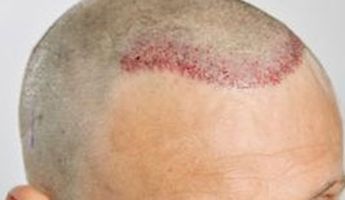
Find the best clinics for Hair Transplant in Monterrey
With Medijump you can browse 3 facilities offering Hair Transplant procedures in Monterrey. The cheapest price available is $2,063 in Monterrey
Hair Transplant in Mexico
Price: $ 2,063
Hair Transplant in Monterrey
Price: $ 2,063
Hair Transplant in Cancun
Price: $ 2,368
Egypt offers the best prices Worldwide
Price: $ 126
From 3 verified reviews
Javier Rodríguez, 21 February 2020
After quoting with different clinics, I found the best service, specialized staff with years of experience and Dr. Camacho, who gives a pre and post operative follow-up. The best investment I could make.
From 2 verified reviews
Miguel Razo, 23 July 2019
I received excellent service for hairtransplant there. satisfied with the result!
Centro Dermatológico Giovanni Bojanini - Monterrey, located in Calle Ecuador, Monterrey, Mexico offers patients Hair Transplant procedures among its total of 5 available procedures, across 2 different specialties. Currently, there's no pricing information for Hair Transplant procedures at Centro Dermatológico Giovanni Bojanini - Monterrey, as all prices are available on request only, whilst the national average price is approximately $2,671. There are many specialists available at the Hospital, with 4 in total, and they have multiple recognized accreditations, including: ISHRS - International Society of Hair Restoration SurgeryESHRS - European Society of Hair Restoration Surgery
Compare Before & After Photos of _procedure_photos.phpHair Transplant
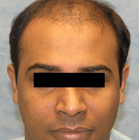
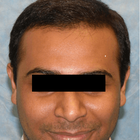
Front view
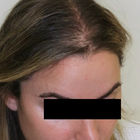
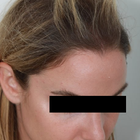
Half-side view
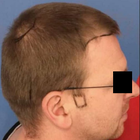
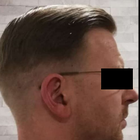
Full-side view
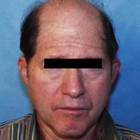
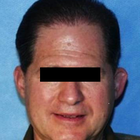
Front view
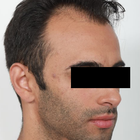
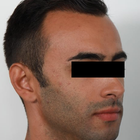
Half-side view
WHY US?
At Medijump, we're making medical easy. You can search, compare, discuss, and book your medical all in one place. We open the door to the best medical providers worldwide, saving you time and energy along the way, and it's all for FREE, no hidden fees, and no price markups guaranteed. So what are you waiting for?

Free

Best Price

Widest Selection

Risk-Free
What you need to know about Hair Transplant in Monterrey

Hair Transplantation, also known as hair restoration surgery, is the surgical process of moving hair follicles from one part of the body that is rich in hair (known as a donor site) and embedding them at the the bald area of the head (recipient site). The medical course of action that aims at addressing hair loss issues and improving aesthetics. While there are many causes of hair loss, the most common reason, especially for men, is genetics. Hereditary hair loss as men age is the number one leading factor of baldness.
It is a minimally invasive procedure, performed under local anesthetic and is most commonly used to treat male baldness, but the technique can also be used to restore eyelashes, eyebrows, beard hair and to fill in scars. The procedure usually lasts between 4 to 8 hours, depending on the number of grafts needed. This procedure is a long-term solution to hair loss, with most patients experiencing significant improvement in hair growth after six months to a year.
Why do people experience hair loss?
We lose an average of 100 hairs a day, however, these hairs are immediately replaced by new hairs growing at the same time. Hair loss can occur suddenly or gradually and it may affect your scalp or your entire body, depending on what’s causing it. Other causes of hair loss may include:
- Stress - a lot of people may experience hair thinning for several months due to a physical or emotional shock. However, this type of hair loss is only temporary.
- Certain Hairstyles and treatments - hairstyles that pull your hair like tight pigtails, ponytails or braids can actually cause traction alopecia. Permanent hair treatments and hot oil treatment may also lead to hair loss; these hair treatments cause inflammation to the hair follicles. If there is scarring, hair loss may be permanent.
- Radiation Therapy - for example, during cancer treatment.
- Certain medical conditions and hormonal changes - in women, hormonal changes due to pregnancy, childbirth menopause or thyroid problems may cause temporary or permanent hair loss. As for medical conditions, hair loss may be due to alopecia, scalp infections like ringworm or a hair-pulling disorder known as trichotillomania.
Sudden hair loss may also be a sign of a specific medical condition that will require treatment. You will need to consult your doctor if you experience more than your usual hair loss whenever you are combing or washing your hair and also if you encounter a sudden patchy loss of hair.
A hair transplant is a common treatment performed on people who are experiencing baldness due to aging and heredity factors. However, if you are completely bald with absolutely no hair left, then this type of treatment may not be applicable for you, as you won't have sufficient donor hair to supply.
What is the cost of Hair Transplant in Monterrey?
The cost of Hair Transplant in Monterrey is typically influenced by various factors. These may include the experience and reputation of the surgeon, the complexity of your case, and the total number of grafts needed. Moreover, the pricing strategy followed by the medical establishment also plays a significant role. Some clinics charge based on the number of grafts transplanted, while others might price the procedure as a package. The exact price can therefore only be determined in consultation with a trusted clinic. While it can appear costly to some, the Hair Transplant is an investment in one's appearance and self-confidence.
What Does The Procedure Involve?
The hair transplant procedure involves taking hair from your Donor Site and transferring it to the area(s) lacking in hair, the Recipient Site, and a local anesthetic will be applied before the procedure begins to limit any discomfort.
There are two main methods used in a hair transplant procedure:
- Follicular Unit Transplantation (FUT) - strips of tissue will be removed from your donor area, these strips will be cut into individual follicular units. Small cuts will be made on your scalp where the follicular unit grafts will be placed. This method is becoming less popular.
- Follicular Unit Extraction (FUE) - individual hair follicles will be directly extracted from your donor area and moved to your recipient site using a specialist microsurgical needle. FUE is now the preferred technique for hair transplants as it will not leave a linear scar at the back of the head.
Procedures are undertaken by a fully qualified technician and usually involve the extraction of around 3,000 grafts, going up to 4,000. Any more, and it will likely require two separate sittings to complete.
How Long Should I Stay in Monterrey for a Hair Transplant Procedure?
Hair transplants are usually performed as an outpatient procedure. Thus, you will be able to go back to your hotel immediately after. Both methods used for Hair Transplant treatments usually take 4-8 hours to complete. With FUE technique, there are no stitches or staples to be removed, so you won't need to stay in Monterrey for long after the procedure, just allow a day or two to be sure before traveling home.
You should expect to pay the clinic another visit the day after the treatment so the doctor can remove the bandage, examine the areas of intake and transplantation of follicles, before washing your hair using a special technique that you will learn to perform by yourself. Finally, the doctor will provide you with a special shampoo that will help to restore the skin.
What's the Recovery Time for Hair Transplant Procedures in Monterrey?
Your scalp will continue to be sensitive to pain for a few days, during which time you should continue to take the medications provided by the doctor. On top of the pain killers and anti-inflammatory meds, you may also be given antibiotics to lessen the risk of infection, as uncommon as this may be.
You should expect to return to work and your daily routine, including exercise, after 5 days. However, the signs of a hair transplant will remain for at least another 2-3 weeks, at which point the newly transplanted hairs will start to fall out - but don't be alarmed! This is to be expected as you've just had a follicle extraction, so dead hair will simply make way for new hair over the coming weeks and months.
If the average person's hair only grows at a centimeter per month, then it will take some time before you can wear your hair long again. You could expect to display short and consistent hair just 4-6 weeks after the treatment.
What sort of Aftercare is Required for Hair Transplant Procedures in Monterrey?
After the procedure is complete, anti-swelling medication and painkillers will be available and you'll be provided with various essentials to see you through the days immediately following. Post-op items may include; specialist shampoo, lotion, multivitamins, a special hat, a headband, neck pillow, and wound dressing.
Having already been provided with your post-op aftercare products, you may also be offered Platelet Rich Plasma (PRP) Therapy to help stimulate the hair follicles and encourage hair growth. This is where a small amount of blood is taken, rich in plasma, which is then injected into the Recipient Site.
What's the Success Rate of Hair Transplant Procedures in Monterrey?
The success rate for hair transplants is one of the highest, at 98% and is considered the only truly effective remedy for hair loss.
The effectiveness of Hair Transplant treatments is significantly shaped by the surgeon's expertise who executes the process. A seasoned and competent surgeon employs sophisticated methods to prevent harm to the transplanted hair follicles during the process, which leads to a higher likelihood of success. Additionally, the ability of the surgeon to place the grafts in an attractive manner that resembles natural hair growth further enhances the perceived successfulness of the result.
Beyond the competency of the surgeon, the overall health status and lifestyle choices of the patient greatly impact the treatment's effectiveness. Subpar habits such as excessive smoking and alcohol intake can obstruct the recovery process and influence the result adversely. Illnesses like diabetes can also interfere with the likelihood of success.
Consideration of the donor hair's quality is another aspect that may affect the success of the procedure. Generally, those with robust, plentiful hair in the donor region have a higher success rate as compared to individuals with sparse or poor-quality hair. The availability of more follicles for transplantation yields better results. A detailed examination is carried out before the Hair Transplant to verify the quantity and quality of the donor's hair.
Are there Alternatives to a Hair Transplant?
Laser therapy is one alternative to a hair transplant. During this procedure, a low-level laser device will be used as a treatment for a hair loss specifically caused by genetics. This low-level laser with a wavelength of 650 nanometres can actually stimulate your hair growth. However, long term effects for this type of alternative still remains uncertain.
PRP Therapy is another alternative you can consider. This type of treatment will make use of your own blood to promote hair growth. Your blood will be spun in a centrifuge to separate your blood’s plasma component from your red and white blood cells. Plasma contains many growth factors that promote hair growth when injected into the scalp.
Other non-surgical alternatives could include simply shaving all your hair off, trying other hairstyles or using a wig or hairpiece.
How do FUT and FUE Compare?
The two most common techniques used are the Follicular Unit Transplant (FUT) and the Follicular Unit Extraction (FUE). How do they compare?
1. FUT, also referred to as FUSS (Follicular Unit Strip Surgery), involves the removal of a strip of skin from the back of the head containing lots of hair follicles, which is stitched up and hidden by the surrounding hair. Then the strip of follicles is divided into 500-2,000 tiny grafts containing just a few hairs. These are then embedded across the bald area of the head.
2. FUE does not require a strip of skin to be removed, instead, the hair follicles are individually removed from the donor site and positioned across the bald area in tiny slits created by a scalpel or needle.
What are the Risks Associated with Hair Transplant?
Like any surgical procedure, Hair Transplant carries certain risks, although they are relatively rare and usually minor if performed by a skilled and experienced surgeon.
Some potential risks and side effects could include:
- Scarring is the most common side effect (only applicable to FUT)
- Infections
- Temporary loss of sensation around the surgical sites
- Inflammation of hair follicles (folliculitis)
- Temporary scalp pain, itching, and swelling.
- Unnatural-looking hair growth
Whilst the information presented here has been accurately sourced and verified by a medical professional for its accuracy, it is still advised to consult with your doctor before pursuing a medical treatment at one of the listed medical providers
No Time?
Tell us what you're looking for and we'll reachout to the top clinics all at once
Enquire Now

Popular Procedures in Monterrey
Prices Start From $153

Prices Start From $500

Prices Start From $4

Prices Start From $500

Recommended Medical Centers in Monterrey for Hair Transplant

- Interpreter services
- Translation service
- Religious facilities
- Medical records transfer
- Medical travel insurance
- Health insurance coordination
- TV in the room
- Safe in the room
- Phone in the room
- Private rooms for patients available

- Interpreter services
- Translation service
- Religious facilities
- Medical records transfer
- Medical travel insurance
- Health insurance coordination
- TV in the room
- Safe in the room
- Phone in the room
- Private rooms for patients available

- Interpreter services
- Translation service
- Religious facilities
- Medical records transfer
- Medical travel insurance
- Health insurance coordination
- TV in the room
- Safe in the room
- Phone in the room
- Private rooms for patients available
Hair Transplant in and around Monterrey
About Monterrey
Nuevo León, a northeastern state in Mexico, takes pride in its capital, Monterrey, a major financial hub for the nation. Serving as a manufacturing and industrial center, Monterrey is also home to a plethora of large Mexican and international businesses. With an impressive GDP (PPP) amounting to US$ 123 billion, it holds the distinction of being the second-most productive city in Mexico. Additionally, its population marking of 5 million residents simultaneously places it as the country's third-most populous city.
Monterrey has successfully carved out a reputation in the tourism sector, particularly drawing global attention as a favored destination for medical tourism. The underlying factors for this growing attraction can be attributed to the following reasons:
- The healthcare industry, banking, and telecommunication are the pillars of the City’s economy.
- The City has some acclaimed hospitals that offer cutting edge treatments. Most hospitals have JCI accreditation, a certification that ensures safety and quality across the healthcare industry.
- Low prices and above-average quality of medical care are the two main reasons that attract medical tourist attention.
- Proximity to the US also provides a big advantage to patients and tourists from the United States of America.
- The most popular procedures are breast augmentation and liposuction and are performed at Dr. Sauceda Plastic Surgery, Dr. Alvar Garcia Plastic Surgery Monterrey, and Dr. David Kirsch M.D. Cosmetic Surgery
Popular Areas in Monterrey
-
The Macroplaza is the largest park in Mexico and is surrounded by many historical buildings and museums. It is a popular spot for locals and tourists alike to relax and enjoy the outdoors.
-
Fundidora Park is a heritage museum and public park that was once home to a steel mill. Today, the park is a popular destination for families and tourists alike, with a variety of attractions including a museum, a zoo, and an amusement park.
-
The Museum of Modern Art displays the works of Ricardo Mazal, Antony Gormley, and Jenny Holzer. The museum is noted for its sculpture yard and restaurant.
-
Cerro de la Silla, Is popular for its great urban hiking trail up the tall mountain for its fantastic view of Monterrey and the surrounding areas.
-
Cerro del Obispado is a historical site that houses a museum and offers panoramic views of the city. It is a popular spot for tourists and locals alike to learn about the history of Monterrey and enjoy the views.
-
To get a glimpse of a traditional wrestling match, Coliseo is the place to be. If you are lucky and brave enough, then you may even get to see a traditional bullfight.
Weather and Climate in Monterrey
It has a dry climate and is one of the hottest cities in Mexico, winters tend to be moderate, while summers can reach high levels of heat. The hot season, which spans from May to September, is often accompanied by rainfall. For the rest of the year, the climate remains mild with relatively minimal temperate fluctuations, and there's hardly any rain during the cold season.
Monterrey can exhibit drastic shifts in its weather scenarios. For instance, a sudden shower during the summer can cool the temperatures down significantly. Conversely, the winter season might witness balmy temperatures in the absence of city-crossing winds. Instances of ice, snow, and sleet are quite the rarity in this region.
Getting around in Monterrey
In Monterrey, there are primarily two airports dedicated to catering a variety of air traffic. The main airport used for commercial flights is Monterrey International Airport. The secondary airport, comparatively smaller, primarily serves private and cargo aircraft traffic. Monterrey International Airport efficiently accommodates a mix of both international as well as domestic travel audiences.
American, United, Delta, and Copa are some of the international airlines that connect it to Houston, Los Angeles, Atlanta, Chicago, Detroit, Dallas, Las Vegas, San Antonio, etc. People can travel to the nearby Mexican cities of Guadalajara, Mexico City, Cancun, Mazatlan, Puerto Vallarta, and Tijuana using Interjet, Aeromar, Magnicharters, and Volaris. At the same time Interjet, Aeromexico, and Viva Aerobus cater to both domestic and international travelers.
Monterrey houses the largest bus terminal in the northern region of Mexico, offering a significant connectivity advantage. Individuals can travel to and from Monterrey and various other bus stations dispersed across Mexico and the US using trans-border buses. Given Monterrey’s closeness to the US-Mexico border, a car ride from the US is another feasible transportation choice.
Moving around within the city is quite feasible and straightforward. Although efficient, the subway system's coverage is relatively limited. The optimum choice for commuting is the taxi service, which may come with a slightly higher cost compared to bus rides. It's advisable to request the driver to go by the meter to guarantee fair charges.
Tourist Visas in Monterrey
Citizens of 67 countries, including Australia, Canada, Schengen countries, the USA, the UK, and Japan, do not need a tourist visa to visit Monterrey, Mexico, for up to 180 days, as long as their trip does not provide any monetary benefit to them. People who have a valid visa to the US and PR in Canada also do not need a separate visa to enter Mexico. The exemption is available to many countries in South America and the Caribbean Islands also. You can check your eligibility on the official website of the Mexican government.
Citizens of other countries will need to obtain a tourist visa to visit Monterrey, Mexico. The tourist visa is valid for six months from the date of entry. You can apply for a visa at the Mexican consulate in your country.
Required documents for a tourist visa:
- Valid passport with at least six months of validity remaining beyond your planned date of departure from Mexico.
- Visa application form.
- Two passport-sized photos.
- Proof of onward travel, such as a return flight ticket.
- Proof of financial resources, such as a bank statement or credit card statement.
- Visa processing fee.
Additional Information
- The local currency used in Monterrey, Mexico, is the Mexican peso (MXN). The exchange rate for the Mexican peso fluctuates daily, but it is currently trading between 20 and 21 Mexican pesos to the euro and 18 to 19 Mexican pesos to the US dollar.
- You can use a credit card for payment at big stores, hospitals, and restaurants. Smaller merchants and establishments may not accept credit cards. Therefore, it is better to carry some local currency. You can also use the ATMs available in the city to withdraw local currency. The use of cards may involve certain transaction charges. Tipping is not compulsory. However, people appreciate some form of tipping; somewhere between 10 to 15 % of the total bill is the norm. Porters also get tipped, say, 10 pesos per bag.
- Mexico Spanish or Castilian Spanish is the main language here. Locals can also communicate in English as well. It would still be an advantage if you can say some basic phrases in Spanish.
- The majority of the people living in Monterrey are Christians.
- Mexicans observe holidays on Christian festivals and some national holidays. Christmas and New Year’s Day are the two main public holidays. Independence Day on 16th September and Revolution day on the third Monday of November are the two main national holidays. Apart from this, there are many other holidays.
Popular Searches
- Plastic Surgery in Thailand
- Dental Implants in Thailand
- Hair Transplant in Thailand
- Breast Augmentation Thailand
- Gastric Sleeve in Thailand
- Gender Reassignment Surgery in Thailand
- Laser Hair Removal in Bangkok
- Botox in Bangkok
- Dermatology in Bangkok
- Breast Augmentation in Bangkok
- Coolsculpting in Bangkok
- Veneers in Turkey
- Hair Transplant in Turkey
- Rhinoplasty in Turkey
- Stem Cell Therapy in Mexico
- Rhinoplasty in Mexico
- Liposuction in Mexico
- Coolsculpting in Tijuana
- Rhinoplasty in Korea
- Scar Removal in Korea
- Gastric Sleeve in Turkey
- Bone Marrow Transplant in India
- Invisalign in Malaysia
- Plastic Surgery in the Dominican Republic
- Tummy Tuck in the Dominican Republic
- Plastic and Cosmetic Surgery in Poland
- Rhinoplasty in Poland
- Hair Implant in Poland
- Dental Implants in Poland
- IVF in Turkey

